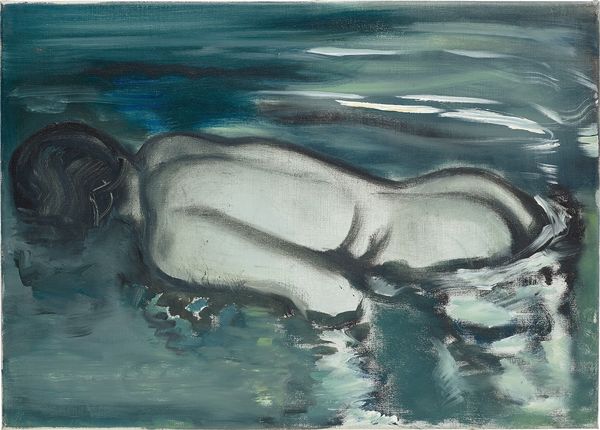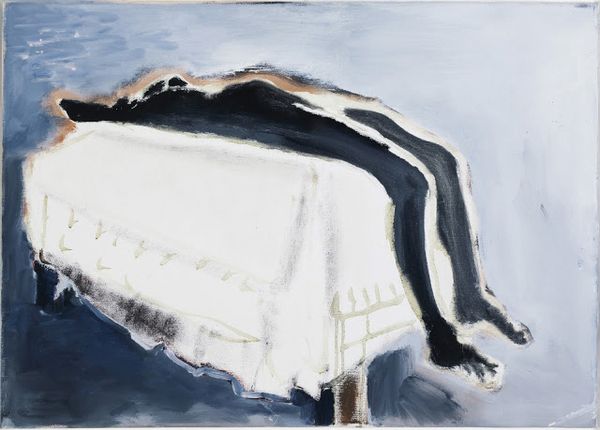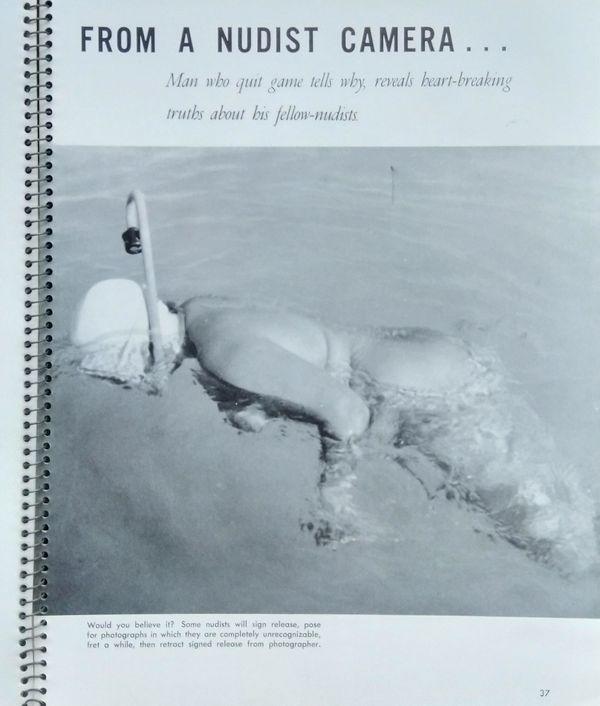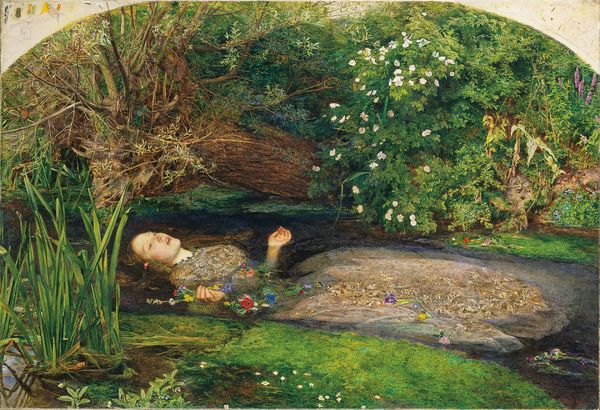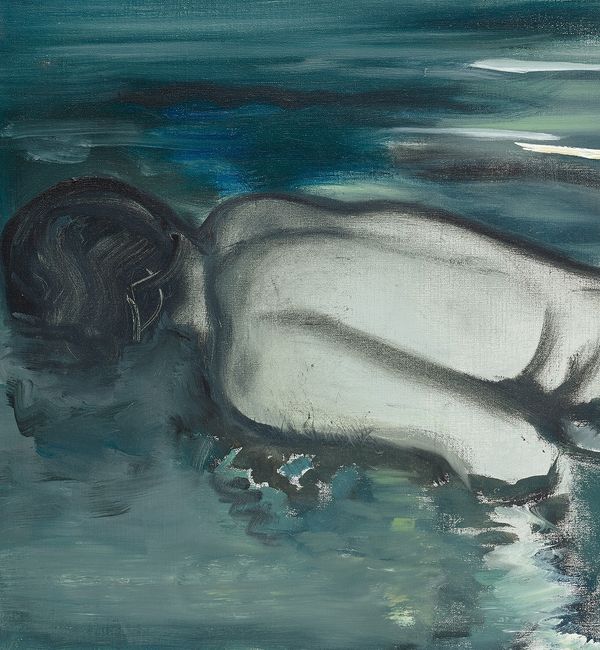Marlene Dumas Losing (Her Meaning), 1988
In Marlene Dumas’ Losing (Her Meaning), a nude woman is seen floating in moonlit waters, her luminescent body refracting the moody blues and greens that pervade the waters around her.
Visually striking and technically commanding, the present work was conceived in tandem with a sister painting entitled Waiting (for Meaning), on the occasion of Dumas’ important solo museum show at the Kunsthalle zu Kiel in 1988. Highlighted on back and front cover of the exhibition catalogue, these two paintings are celebrated as seminal early works presaging the artist’s discrete series of reclining female nudes.
While Waiting (for Meaning) entered the collection of the Kunsthalle zu Kiel, the present work was acquired by the artist Erik Andriesse, whom Dumas considered a close friend, and described in a 1986 text as a passionate character “glowing in the dark”. Remaining in the same family since Erik’s passing in 1993, Losing (Her Meaning) has been included in all major Dumas exhibitions in the past three decades – from Documenta 9 and her seminal Miss Interpreted solo show at the Van Abbemuseum in 1992, to, most recently, The Image as Burden, which traveled from the Stedelijk Museum to Tate Modern, and The Beyeler Foundation, in 2014-2015.
Marlene Dumas Waiting (for Meaning), 1988, oil on canvas. © Marlene Dumas.
The photograph on which Losing (Her Meaning) is based, found by gallerist Paul Andriesse
When Dumas created the present work for her 1988 exhibition at the Kunsthalle zu Kiel, she had established herself as one of the leading post-conceptual painters in Europe. In 1985, she triumphantly returned to painting after a five-year hiatus, developing a complex approach to figurative painting that took as a starting point her visual archive of art historical reproductions, news clippings, and photographic imagery. While the artist based Waiting (For Meaning) on a 1970s photograph by David Hamilton depicting a female nude outstretched on a bed, the present work takes after the image of a woman snorkeling, found by the artist’s gallerist Paul Andriesse in a nudist magazine.
Edvard Munch Mermaid, 1896, oil on canvas. Philadelphia Museum of Art. Image: Bridgeman Images
Quite literally “losing her meaning”, the woman portrayed in the present work eschews the playful context of its source image, and instead evokes a solemn – almost academic – subject matter laden with art historical precedent. In the composition, Dumas presents us with a lone figure that resembles Edvard Munch’s Mermaid from 1896, or John Everett Millais’s Ophelia from 1851-1852. With the subject of a nude female figure open to the viewer’s gaze, the artist transforms an innocuous leisure image into a more charged apparition imbued with sinister undertones. Simultaneously, her appropriative stance challenges the male-dominated tradition of female representation in art, thus layering the present work with ambivalent meaning.
John Everett Millais Ophelia, 1851-52, oil on canvas, Tate, London. Image: SCALA, Florence.
Detail from Marlene Dumas' Losing (Her Meaning), 1988
While Dumas had previously focused on frontal portraits, works such as the present one exemplify how she shifted towards the motif of reclining female nudes. "The paintings Waiting (For Meaning) and Losing (Her Meaning)… are pivotal in terms of unpacking the problem of the female body" (Cornelia Butler, Measuring Your Own Grave). As Dumas explained of this series, "After having used confrontational and frontal compositions for a long time (the big eyes and faces), it was time to turn the gaze away. 'The death of a beautiful woman is unquestionably the most poetical topic in the world,' said E.A. Poe…and a naked one even more so Roger Vadim could add" (Marlene Dumas, ‘Waiting for Meaning’). With Losing (Her Meaning), Dumas both plays into this tragic-romantic trope and challenges the male-dominated tradition of the female nude in art history at large. She "replaces the bed with a pool of water and inverts the figure as if to drown her. Dumas’s unmistakable point here is that the role of the female model throughout art history…may be likened to that of the woman generally" (Neal Benezra, Distemper, Dissonant Themes in the Art of the 1990s).
Installation view of the present work in Van Abbemuseum, Marlene Dumas Miss Interpreted, Eindhoven 1992. © Marlene Dumas.
The open-ended image perfectly conveys the notion of indeterminacy and duality that lie at the core of Dumas’ practice. Dumas probes the fraught relationship between representation and interpretation through her pointed combination of title and image: the title Losing (Her Meaning) conjures a number of associations, but immediately it would appear to suggest the futility of ‘waiting for meaning’ thematized in its companion piece. Meaning is crucially made and re-made within each new context and with each viewer. While Losing (Her Meaning) then powerfully encapsulates the core tenets of Dumas' post-conceptual practice, it above all remains a beautiful ode to the pleasure of painting –encapsulating the painterly virtuosity that has made Dumas one of the most important figurative painters of our time.
